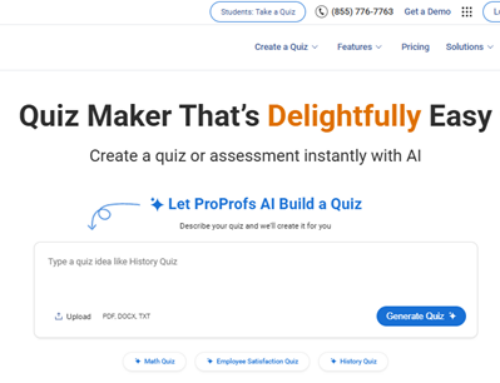 Your mobile app functions as the digital storefront for millions of customers. Users form opinions within seconds of opening an application. Navigation determines whether they complete purchases, book services, or simply delete the app in frustration.
Your mobile app functions as the digital storefront for millions of customers. Users form opinions within seconds of opening an application. Navigation determines whether they complete purchases, book services, or simply delete the app in frustration.
Most applications still rely on menus, tab bars, and search boxes designed a decade ago. These tools work, but they treat every user identically. This approach wastes time and loses customers. Even some of the best AI apps have already moved beyond these traditional designs.
The problem compounds as app catalogs expand. Major retailers now offer millions of products. Service platforms connect users to thousands of providers. Nested menus often lead simple searches into complete frustration, where most users give up. That’s why mobile app development companies are increasingly turning to AI-driven solutions to improve navigation.
Machine learning algorithms transform navigation from a static map into a responsive guide. The technology exists today, deployed by companies processing billions of user interactions daily.
-
Building Individual User Profiles
Every tap, swipe, and purchase creates data points. Machine learning systems analyze these interactions to understand preferences. The process works like this:
- A user opens a shopping app three times weekly, always checking the electronics section first.
- They browse headphones frequently but purchase phone accessories.
- They ignore fashion categories entirely. The algorithm notes these patterns.
This personalization extends beyond category placement. Product recommendations adjust to budget ranges observed in past purchases. Search suggestions reflect brand preferences. Even color schemes in product galleries align with demonstrated tastes.
-
Search That Understands Context
Traditional search matches characters. Type “blue sh” and get results for blue shoes, blue shirts, blue sheets. Some of the best AI apps predict the intent before users finish typing.
The system considers multiple factors simultaneously. Natural language processing handles complex queries without requiring specific syntax. Users type “waterproof jacket men’s medium under 200” and receive filtered results instantly. No need to navigate through categories, select filters, or refine searches manually.
Voice search integration takes this further. Spoken queries like “find me running shoes similar to my last purchase but in black” return relevant results by connecting purchase history with natural language understanding.
-
Real-World Context Integration
Navigation extends beyond digital interfaces for many applications. Food delivery, ridesharing, and logistics apps must consider physical world conditions. At the same time, they must account for risks such as food delivery fraud, which can lead to revenue losses and customer dissatisfaction.
A food delivery app processes multiple data streams when suggesting restaurants. Kitchen preparation times vary by order volume. The AI system weighs these factors to show restaurants that can actually deliver within reasonable timeframes, not just those closest geographically.
Retail apps with physical locations use similar principles. A customer searching for a specific product sees availability at nearby stores, along with real-time inventory levels and optimal routes through the store to reach the item quickly.
Beyond responding to current actions, AI anticipates future needs. Banking apps notice when users check balances before typical bill payment dates and proactively surface payment options. Travel apps recognize booking patterns and highlight relevant deals during planning seasons.
This prediction operates at the micro level, too. If users consistently navigate from product pages to review sections, the interface can automatically scroll to reviews or make them more prominent. The system learns common task flows and optimizes accordingly.
Implementation Requirements
Successful AI navigation depends on several technical and organizational factors:
- Data Infrastructure: Systems need robust collection and processing capabilities. Every user interaction must be captured, stored, and made available for analysis. This requires investment in databases, analytics platforms, and real-time processing systems.
- Privacy Compliance: Regulations like GDPR and CCPA mandate transparent data usage. Users must understand what data gets collected and how it improves their experience. Opt-out mechanisms need prominent placement.
- Algorithm Training: Machine learning models require substantial training data before producing useful results. Early implementations might seem less intelligent than traditional navigation until sufficient patterns emerge.
- Performance Optimization: AI features cannot slow app performance. Background processing, efficient caching, and smart preloading keep interfaces responsive while personalizing experiences.
- Continuous Refinement: User behavior evolves. Models need regular updates to maintain accuracy. A/B testing frameworks help validate that AI suggestions actually improve outcomes.
Conclusion
Static navigation belongs to an earlier era of mobile development. Today’s users expect applications to understand their needs and adapt accordingly. The technology to deliver these experiences exists and improves constantly.
Companies face a clear choice. Maintain traditional navigation and watch engagement metrics decline as competitors offer smarter alternatives. Or invest in AI-enhanced systems that learn from users, anticipate needs, and deliver genuinely helpful experiences.
Mobile navigation will only grow more intelligent. Early adopters gain competitive advantages that compound over time as their systems learn from larger user bases. The question facing product teams is not whether to implement AI navigation, but how quickly they can deliver these capabilities before users migrate to apps that already have them.
